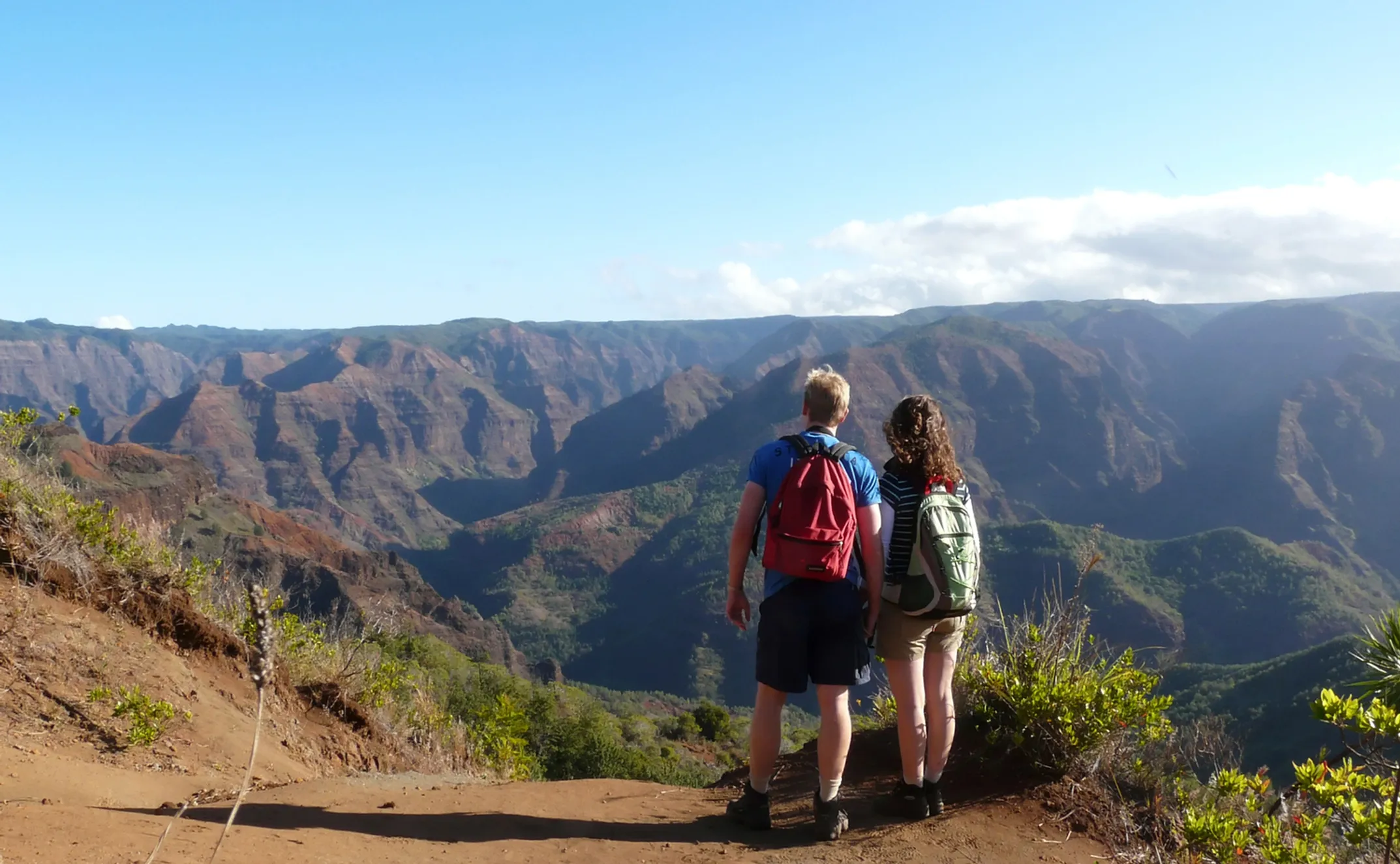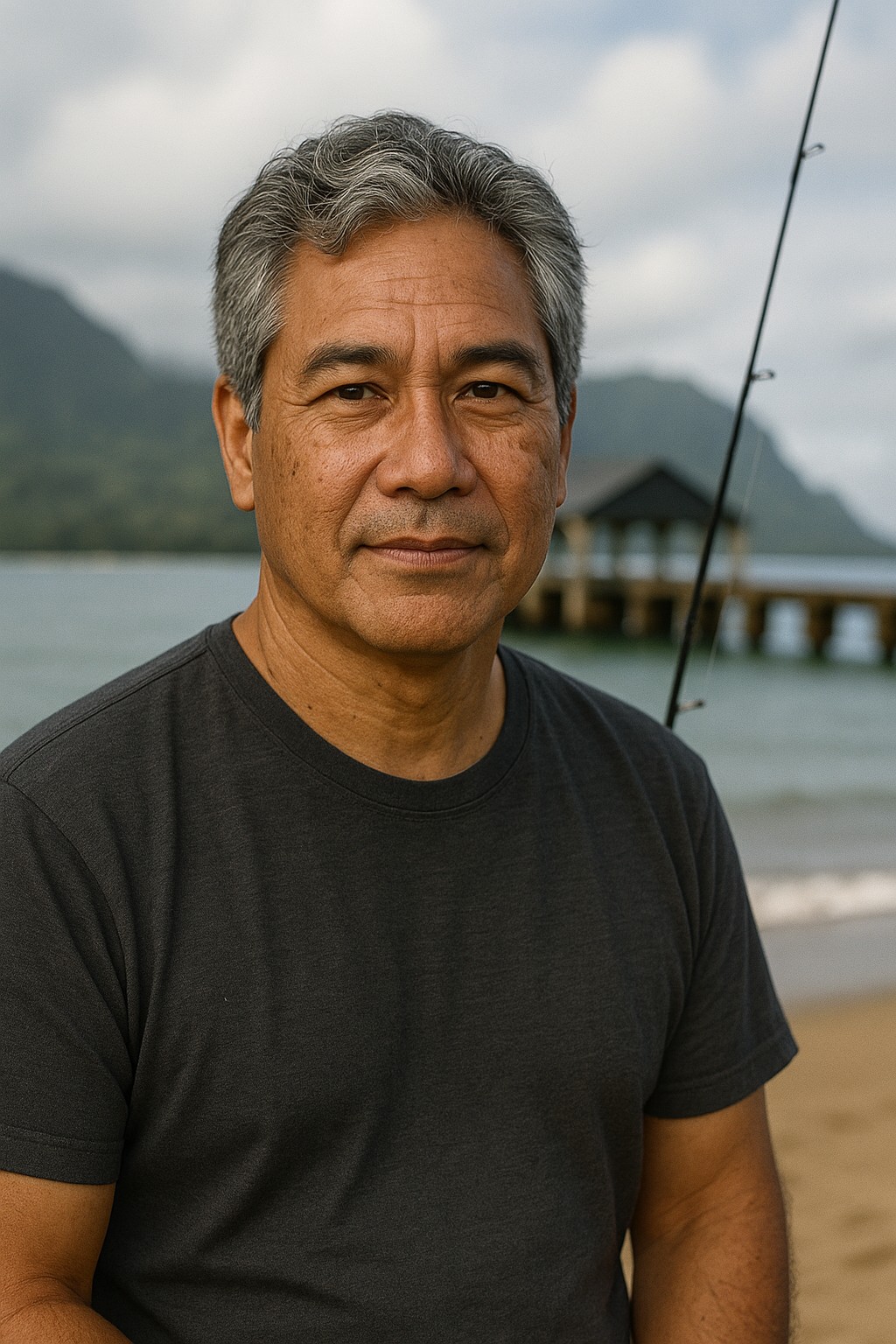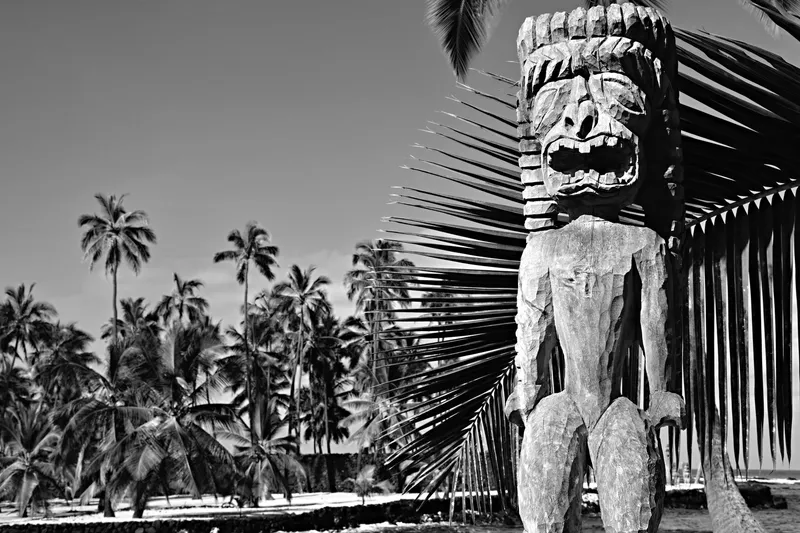

Your Journey Begins
An Experiential Guide to Hawaiian Art

Written by a Cultural Expert
Kalani MillerKalani's Picks – Five Emerging Native Hawaiian Artists to Watch
The spirit of Hawaiian art is constantly being renewed by a new generation of creators who are pushing boundaries while honoring their heritage. Here are five artists whose powerful voices are shaping the future:
Anthony Aiu (Choreographer)
Splitting his time between Oʻahu and New York City, Aiu is a dancer and choreographer whose work is a form of "movement-based Indigenous storytelling." He draws on his rich Polynesian ancestry to create contemporary dance that gives voice to underrepresented Pacific Island narratives on a global stage.
Pele Bauch (Dancer/Multidisciplinary Artist)
A hapa haole (mixed race) Kanaka Maoli artist based in New York, Bauch explores the complexities of her heritage and identity through performance. Her work often uses unconventional materials like massive lengths of rope to grapple with what it means to belong, especially as part of the Hawaiian diaspora.
Moses Goods (Playwright/Actor)
As the founder of the ʻInamona Theatre Company, Moses Goods is one of Hawaiʻi's most prominent theater artists. He is dedicated to reintroducing the native stories of Hawaiʻi to the community. Viewing his own work as a "condiment to the greater sustenance" of the ancestral stories that came before him.
Noa Dettweiler-Pavia (Ceramicist)
Working from his home studio in Waimanalo, Oʻahu, Noa Dettweiler-Pavia creates what he calls "dys+functional" ceramic pieces. His work is deeply tied to place. Incorporating native pālolo (clay) and telling stories of his upbringing. A practicing attorney, his art is a powerful expression of his connection to his ʻāinahānau (birthland).
Nathan Nakana Jugoz (Potter)
A cultural practitioner living a sustainable, off-grid lifestyle on his family's land, Nathan "Nakana" Jugoz creates pottery filled with mana and the spirit of aloha ʻāina. He sees his functional, elegant ceramics as a way to reduce waste and live a sovereign lifestyle. Guided by the proverb, "our future should look more like our past."

How to Buy with Aloha – Ethical Sourcing Guidelines
Bringing a piece of Hawaiian art home is a beautiful way to cherish your journey. But it comes with a responsibility, or kuleana. Purchasing ethically makes sure that your money directly supports the artists and the culture they perpetuate.
✅ Seek Authenticity
Buy directly from the artist at their studio, a craft fair, or their official website. Look for collectives like Maoli Arts Movement (MAMo).
Ask: "Are you the artist?" or "Is this made in Hawaiʻi by a local artist?"
📖 Learn the Story
Engage with the artist or gallerist. Ask about the meaning of the patterns, the source of materials, the story behind the piece.
In Hawaiian culture, knowledge and story are paramount.
🏛️ Support Institutions
Purchase from museum shops like the Bishop Museum, community arts centers, or non-profits.
Proceeds reinvest into educational programs and cultural preservation.
💰 Workshop Costs
- Lei Making: $45-$75
- Kapa Making: $85-$150
- Ceramics: $60-$120
- Jewelry: $50-$95
- Painting: $70-$140
📅 Best Times
- POW! WOW! February
- Hawaii Triennial 2025
- Hula Festival July
- MAMo Events Year-round
🎓 Learning Centers
Big Island workshops
Maui art classes
Oʻahu kapa making
🧭 Hawaiian Art Guide
Introduction & foundations
Traditional FoundationsAncient arts & techniques
Modern VoiceContemporary expressions
Current page
Become Part of the Story – Workshops, Demos, and Events
The best way to truly appreciate Hawaiian art is to feel it in your hands. Many cultural centers and artists across the islands welcome visitors to learn directly from the source. Offering a chance to become part of the creative process.
Hands-On Workshops & Demos
Volcano Art Center (Hawaiʻi Island)
Located within the inspiring landscape of Hawaiʻi Volcanoes National Park, VAC offers a rotating schedule of workshops in everything from lei-making and hula to ceramics and photography.
Hui Noʻeau Visual Arts Center (Maui)
Set on a beautiful historic estate in Upcountry Maui, the Hui offers professional classes for all skill levels in ceramics, printmaking, jewelry, and Hawaiian arts.
Pūkoʻa Studios (Oʻahu)
Join artist Page Chang and the Kula Kapa Waimānalo team for a kapa-making experience at Sea Life Park. Where you can learn the traditional methods of processing wauke with an ocean view.
Live Plein Air Painting (Oʻahu)
Artist Mark N. Brown not only offers outdoor painting classes but can also be hired to create a piece live at a special event. Allowing you to witness a landscape come to life on canvas.
Annual Hawaiian Art Events Calendar
Planning your trip around one of Hawaiʻi's premier art events offers an unparalleled immersion into the culture.
Hawaiʻi Triennial
2025Location: Oʻahu, Maui, Hawaiʻi • Frequency: Every 3 Years
The largest periodic exhibition of contemporary art in Hawaiʻi. Featuring artists from the Pacific and beyond with powerful, thought-provoking themes.
Schaefer Portrait Challenge
Jan-Mar 2025Location: Maui, Statewide • Frequency: Triennial
A prestigious juried exhibition encouraging artists to capture the diverse people of Hawaiʻi's communities in portraiture.
Paint Maui Plein Air Invitational
FebruaryLocation: Maui • Frequency: Annual
A week-long event where renowned artists paint outdoors across West Maui. Features public paint-outs, lectures, and a gala art sale.
POW! WOW! Hawaiʻi
FebruaryLocation: Oʻahu (Kakaʻako) • Frequency: Annual
An international street art festival that transforms the Kakaʻako district with dozens of new, large-scale murals each year. Accompanied by block parties and artist talks.
Prince Lot Hula Festival
JulyLocation: ʻIolani Palace, Oʻahu • Frequency: Annual
Hawaiʻi's largest non-competitive hula event, celebrating both traditional (hula kahiko) and modern (hula ʻauana) forms of the dance.
Maoli Arts Movement (MAMo)
Year-roundLocation: Oʻahu • Frequency: Ongoing
A year-long celebration of Native Hawaiian art featuring artist markets, gallery shows, and the famous Wearable Art Show highlighting contemporary Kanaka Maoli designers.
The Raw Canvas at Coral Crater
After immersing myself in the finished works of art, I felt a pull to connect with the ultimate source: the ʻāina itself. At Coral Crater Adventure Park on Oʻahu, I strap into an ATV and feel the fine, red earth kick up around me. The landscape is raw, rugged, and alive. Later, ziplining high above the crater, I see the world from a different perspective. A tapestry of textures and colors that have inspired artists for centuries.
This isn't just an adrenaline rush. It's a visceral reminder of where all Hawaiian art begins. The volcanic rock (pōhaku), the rich soil that provides pigments for kapa, the vibrant foliage that inspires patterns—this is the original palette. The same earth I'm riding on was once carved into petroglyphs and shaped into the adzes used to build canoes.
This thrilling experience connects me back to the foundational truth of my journey: all Hawaiian art is born from, and will always return to, the land.
The Never-Ending Narrative
My journey ends where it began: with a story. But I now understand that Hawaiian art is not a collection of artifacts in a museum or products in a gallery. It is a living, breathing, growing narrative. It is the sound of the ʻouʻou echoing in a Mākaha valley. The defiant spray of a paint can on a Kakaʻako wall. The silent gaze of a kiʻi standing guard over its sacred space.
It is a story of deep connection to the ʻāina. Of unwavering strength in the face of erasure. Of an identity that refuses to be defined by others. To experience it is not to consume it, but to listen to it. And to listen, respectfully and with an open heart, is to become a small part of its unbroken, never-ending story.
Begin Your Art Journey Today
Transform your visit from vacation to cultural exchange. Support living traditions and become part of Hawaiian art's continuing story.

